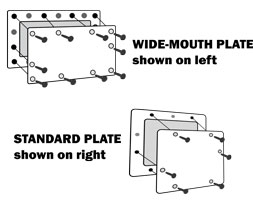Closing Your Above Ground Pool
To close your pool you will need the following:
[download id=”6″ format=”1″]
- Shock
- Winterizing Chemical Kit
- Skimmer Closure Plate
- Plug for Return Fitting or Light
- Ice Compensator (Air Pillow)
- Winter Cover
** Cover Pumps are strongly recommended to keep excess water from building up on your cover. Excess water on your cover means excess stress and a torn cover or damaged pool.
Read entire label of each pool chemical and use in accordance with
precautionary statements and directions. Pool chemicals can be
dangerous if used improperly. All chemicals should be handled by
adults only, and kept out of the reach of children. Filter system must always be on and running when adding chemicals to pool. All chemicals must be added to pool separately and must not be mixed together.
Step 1: Clean and vacuum pool.
Step 2: Check and adjust PH and Alkalinity. Follow directions and precautionary statements on labels.
Step 3: Add shock at a rate of 1 gallon per 5,000 gallons of water. Follow directions and precautionary statements on label.
Step 4: Add any liquid components of winterizing kit. Follow directions and precautionary statements on each label.
Step 5: Run filter for at least 1 hour.

Step 6: Attach a skimmer plate (Olympic – Skimmer Plate). Remove ONLY the 6 screws corresponding to the 6 holes in the plate. 10 screws for wide mouth skimmers. Do not remove skimmer face plate.
Step 7: Plug return fitting with Hydrotools – Winterizing Plug or your pool light with a Winter Plug For Aqualuminator) in the inside (water side) of pool. If plugging a light, make sure that the plug is pushed in all the way. The plug must be flush in the light housing. Dip plug into pool water to lubricate if necessary.
Step 8: Raise water level 3-4 inches from top rails.
Step 9: Inflate Air Pillow (leaving soft) and fasten, allowing it to float in the center of the pool. Leaving air pillow soft by not filling it all the way with air will allow it to give a little rather than pop when the ice forms during the winter.
Step 10: Add winterizing chemical kit.
Step 11: Place cover over pool draping over the air pillow so it lays on the surface of the water all around the pillow. Pulling the cover to tight will cause the cover to rip and tear.
Step 12: Add 1-2 inches of water on the cover to prevent wind damage.
Step 13: Empty and clean filter, allowing it to dry before storing.
Step 14: Store all filters in warm dry places to prevent cracking. Drain excess water off cover during winter months to prevent damage to your pool.
Step 15: (If needed) Blow out excess water in the pool heater using an air compressor or shop vac and plug inlet and outlet lines of heater.
Winter Maintenance Tips
As water, ice and snow build up on your pool cover during the winter, always drain the cover when possible using a cover pump.
Too much water on the cover can severely damage your pool . Water weighs over 8 lbs per gallon, so a few inches of water on your cover can add up to thousands of pounds. The weight of the water can pull the cover into the pool. The cable, which holds the cover in place, will then pull the top ledges, the skimmer and the return up, severely damaging your pool. Your warranty does not cover winter damage.
Excess water on the cover can also rip your liner. The weight of the water will cause more movement in the ice below, which can tear your liner. Never attempt to break ice on your cover or in your pool because it can damage your pool liner. Wait for the ice on your cover to melt and then remove the excess with your cover pump.
Pool Volume in Gallons
| Round Pools | Capacity (Gallons) | Oval Pools | Capacity (Gallons) |
| 10 Round | 2,000 | 8x12,8x14 | 3,000 |
| 12 Round | 3,000 | 8x19 | 3,500 |
| 15 Round | 5,000 | 10x15, 10x16 | 3,500 |
| 18 Round | 7,500 | 10x21, 12x18 | 5,000 |
| 21 Round | 10,000 | 12x24, 14x20 | 7,500 |
| 24 Round | 14,000 | 14x25, 15x24 | 10,000 |
| 27 Round | 18,000 | 15x30, 16x26 | 12,000 |
| 30 Round | 21,000 | 16x32 | 15,000 |
| 18x33 | 19,000 |
Note: Pool volumes above are approximate. For exact calculations please use the calculator below.




